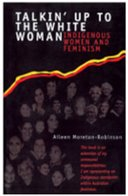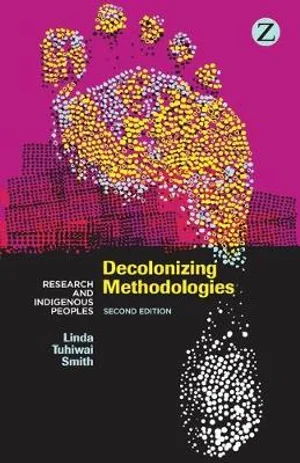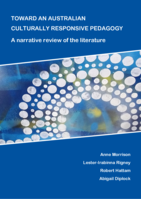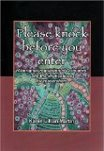Research Methodologies and Methods
The following sections will guide you through different Indigenous methodologies and methods. It is important that you are clear on the differences between the two words. Methodologies have thus far escaped a commonly agreed upon definition but essentially, they are anchored in how knowledge is formed, the culture that developed the knowledge and its respective value systems. Methods are the practical ways in which you collect data. Since your research question will be anchored in a methodology, you will need to decide which method is most appropriate to answer your research question. For example, if you are anchoring yourself in an Indigenous research methodology, you will need to consider appropriate Indigenous methods to collect relevant data. If you don’t, you may have data, but you won’t be able to answer your research question. Find out more about appropriate methodologies and methods with Indigenous populations in the following sections.
Research is defined as the creation of new knowledge and/or the use of existing knowledge in a new and creative way so as to generate new concepts, methodologies, inventions and understandings. This could include synthesis and analysis of previous research to the extent that it is new and creative. (Australian Research Council)
I would like to learn more about…
Methodologies
Research methodologies set a framework of values and beliefs around your research approach. Methodologies are anchored in broader philosophies and epistemologies (such as Standpoint Theory which you will read about further below). Methodologies set the scene for the research methods with which you will gather your data. If you have gone through an Australian university system before, you might be familiar with Western methodologies. However, if you are engaging with Indigenous communities, they are not appropriate as they do not represent Indigenous value and belief systems. Read the following sections to understand more about Indigenous methodologies.
“And for Indigenous Methodologies it is really important to understand all that intuitive stuff within yourself, how important that is and how it really relates in the research methodology for Indigenous People.” (PhD candidate)
Methods
When collecting data, you are applying a particular research method that has to be anchored in your methodology. There are many ways in which you can collect data within Indigenous contexts, and some options for how to do this best will only become apparent when you are immersed in the culture and value system of the community you are working with. When thinking about these aspects of research with Indigenous peoples you will quickly discover that you will need to be very flexible in how you approach your research, and how data can be obtained and analysed. Consider that many appropriate Indigenous research methods need to allow for storytelling and deep reflection and knowledge sharing from all participants. This will undoubtedly create a very rich data set which will require an adequate amount of time to be analysed and reflected on. This may all take time and you need to consider this carefully for your project planning.
Indigenous Research Methodologies:
Indigenous peoples have always been researchers who learned about the land, properties of materials, animals and plants throughout their long-lasting histories. The most important thing to remember is that if you would like to conduct research with Indigenous communities, that you will need to understand that the community you are working with will set the agenda for your research. Most importantly, as a researcher, you need to be sensitive to the culture of the particular community you are going to work with. It may take time for you to immerse yourself in this culture (including their protocols, values, and behaviours) and develop an appropriate understanding of the culture, which you will need to consider when planning and designing your research project.
Understanding the characteristics of Indigenous Research Methodologies:
Recognition of Indigenous worldviews, knowledges, and realities as distinctive and vital to their existence and survival
Honouring social protocols (mores) through which the Indigenous Communities can live, learn and situate themselves on their lands, and the lands of others
Emphasising social, historical, and political contexts which shape their experiences, lives, positions and futures
Indigenous research methods will privilege Indigenous voices, peoples, and lands
Identifies and addresses issues of importance to Indigenous Peoples and Communities.
There are many different Indigenous research methodologies available and below you will find some information on a select few. You will quickly recognise that at the core of these research methodologies is the sense of community and how new knowledge can be achieved through dialogue and cooperation.
The following vignette gives an insight into a methodology appropriate for a New Zealand context and the Maori culture
Kaupapa Maori:
Kaupapa Maori is the conceptualisation of Maori knowledge through oral tradition. It is the process by which the Maori mind receives, internalises, differentiates, and formulates ideas and knowledge exclusively through te reo Maori (language). This knowledge validates a Maori worldview and is Maori-owned and controlled. Teo reo Maori is the only language that can access, conceptualise and spiritually internalise this body of knowledge. Kaupapa Maori assumes (and has as a goal) the validity and legitimacy of Maori, the importance of Maori culture and language. The method relates to the “struggle for autonomy over cultural well-being.” It is research that values Maori way of doing things. It aims to take control of their own culture, aspirations and destiny (see first principle below).
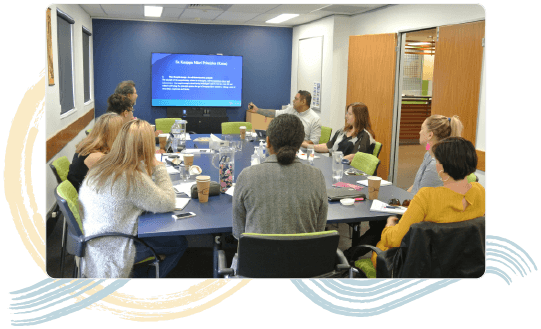
Because the context of the research is important, there is no single definition of Kaupapa Maori, however an analytical approach common in Kaupapa Maori is to think critically, including developing a critique of Pakeha (non-Maori) constructions of Maori and affirming the importance of Maori self-definitions and self-evaluations.
There are six principles for Kaupapa Maori research:
- Tino Rangatiratanga – the self-determination principle (relates to sovereignty, self-determination, control and independence. It is about having meaningful control over one’s own life and cultural well-being.
- Taonga tuku iho – the cultural aspiration principle asserts the position that being Maori is normal. Teo reo (language), matauranga (knowledge), tikanga (custom) and ahuatanga (characteristics) of Maori are actively legitimated and validated. Emphasis is on a strong emotional and spiritual factor highlighting, that knowledge originates from a distinctly Maori metaphysical base. This allows for a spiritual dimension to be taken into account when conducting research.
- Ako – the culturally preferred pedagogy principle, that promotes teaching and learning parcitices unique to tikanga Maori (custom). It also advocates for Maori to be able to choose their own preferred pedagogies.
- Kia piki ake I nga raruraur o te kainga – the socio-economic mediation principle (addresses the issue of Maori socio-economic disadvantage and the negative pressures this brings to whanau (Maori families). It asserts a need for Kaupapa Maori research to be of positive benefit to Maori communities, and validates the relevance and success of Maori intervention approaches.
- Whanau – the extended family structure principle. Whanau (family) and whanaungatanga (family connectedness) are an integral part of Maori culture and identity, and they are a necessary part of Maori survival and achievement. Whanau acknowledges the responsibility and obligations of the researcher to nurture and care for these relationships.
- Kaupapa – the collective philosophy principle. Kaupapa Maori initiatives are held together by a collective vision and commitment, and connects Maori aspirations to political, social, economic and cultural well-being. The research topic has to contribute to the overall Kaupapa.
(Brewer, Harwood, McCann, Crengle, & Worrall, 2014; McCleland, 2011; Smith, 1999)
The following methodology was developed and adapted from a Western research culture into a Hawaiian context
Indigenous Heuristic Action Research:
Ku Kahakalua developed this research methodology when completing her doctorate in Indigenous education. The methodology is a blend of American heuristic (a research process that at the core engages the researcher on a personal and vulnerable level, characterised by self-searching, self-dialogue and self-discovery; Moustakas 1990) and the spiritual Hawaiian approach of involving mana, the personal power of physical, emotional, intellectual and spiritual strengths. It involves personal experiences and skills, including hopes and dreams, and ancestral endowments, including wisdom. It is understood that all these things influence what we do in our various roles in life. Hence, the heuristic process is deeply autobiographical and self-reflective.
The characteristics of this research methodology are the following:
- Research question centres on an Indigenous “plight” and seeks to bring about positive change.
- The research is conducted by an Indigenous person in an Indigenous community for the immediate benefit of this community and with the assistance of this community.
- The researcher personally implicates and affects the researcher and their family and community.
- The research includes a practical application of the theory via an ongoing social action project.
- The research process utilises Indigenous data collection methods such as observation and participation, talk story and dream learning.
- The research process follows the six-phase heuristic process of the American heuristic research process (Initial engagement, immersion into the topic and questions, incubation, illumination, explication, culmination of the research into a creative synthesis; for more information on this, read the vignette about Ku Kahakalau and her research journey)
- The research findings are presented both in a format that is understood and preferred by the Indigenous community involved and as a format deemed acceptable by academic standards.
Who are you in this research?
When you are conducting research with Indigenous communities, you will need to develop a viewpoint from an Indigenous perspective. It is important that you consider your role in the research process. Look at the list below to learn more about important considerations for preparing and conducting your research:
- What is your cultural background? How does it influence your knowledge, truth and reality?
- What theory of knowledge (epistemology) do I apply to my research? How does it inform my theoretical framework, my ideas, and theories? How does it influence how I see my research approach?
- What is my theoretical framework (or my discipline)? How will this influence my research question, my data collection protocol and how I want to analyse my data?
- Why do I want to do this research?
- What is my role as researcher and how am I fulfilling this role?
- Am I choosing a method that allows me to fill this role as a researcher?
- How is the research impact on me?
When considering who you are in the research, we will need to make a brief detour through theoretical frameworks (sometime referred to as epistemologies) that define your grounding, your standpoint, and your view of the world. In any kind of research, this is an important thing to know but it is more important in research where you as the researcher are interpreting with non-quantifiable data from your participants. If you are working with methods such as interviews or recordings of speaking circles, you will have to interpret and bring together what you have learned in this process.
Indigenous Standpoint Theory
Within the context of Indigenous research, one of those theories is Indigenous standpoint theory. This theory postulates that the social position of the knower has influence of how knowledge is possible and delimited. The emphasis is on the reflexivity and distinction between standpoint and experience; in other words, the Indigenous person (knower) and their standpoint is the starting point from which new and objective knowledge has to be generated. Indigenous standpoint is not just the reflection on experience or a pre-existing status, but it needs to be produced, analysed, and discursively constructed. It is not deterministic but an intellectual device.
Indigenous standpoint theory enables you to critically analyse accepted positions and arguments as an ongoing investigation to express experiences of the everyday conceptually from within this experience rather than applying readymade concepts and categories to those experiences. So, standpoint theory enables you to engage in a framework of enquiry that does not postulate a truth over Indigenous peoples, but uncovers the workings of knowledge and improves our understanding of how Indigenous peoples are caught up and implicated in its work. Standpoint theory rests on three principles:
- My social position is discursively constituted within and constitutive of complex sets of social relations as expressed through the social organisation of my everyday.
- To recognise that Indigenous agency as framed within the limits and possibilities of what I can know from this constituted position – to recognise that at the interface we are constantly being asked to be both continuous with position at the same time as being discontinuous with another.
- The constant tensions that this tug of war creates are physically experienced, both inform as well as limit what can be said and what is to be left unsaid in the everyday.
(Nakata, 2007)
Indigenous standpoint theory thus allows the researcher to break away or move beyond the notions of structuralists’ power and causal analyses, and makes way for a more sophisticated view of the tensions created between Indigenous and non-Indigenous dualities, not as the literal translation of what is said or written in propositions but the physical experience and memory of such encounters in the everyday and to include them as part of the constellation of a priori elements that inform and limit not just the range but the diversity of responses.
Although I have knowledge of my experience at the interface and can forge a critical standpoint, I am not out singularly to overturn the so-called dominant position through simplistic argument of omission, exclusion or misrepresentation but rather out there to make better arguments in relation to my position within knowledge, and in relation to other communities of “knowers”.
Also have a look at the little research vignette about different Indigenous researchers throughout this web page to understand a bit more about how you need to structure your research framework.
Indigenous Women’s Standpoint Theory:
An Indigenous women’s standpoint is constituted by the respective women’s sovereignty and is constitutive of their way of being (ontology), way of knowing (epistemology) and way of doing (axiology). Problems and questions are generated by Indigenous women’s knowledges and experiences acknowledging that individual experiences will differ due to intersecting oppressions and different power relations produced under social, political, historical, and material conditions are consciously or unconsciously shared. The conditions and the sets of complex relations that discursively constitute us in the everyday are also complicated by respective cultural differences and the simultaneousness of the compliance and resistance as Indigenous sovereign female subjects. Indigenous women operate and live within the omnipresence of patriarchal white sovereignty and its continual denial of their sovereignty.
(Moreton-Robinson, 2013)
Indigenous Research Methods:
Below are a few examples that have been used successfully. You can see from the cultural contexts given in some of these examples that some of these methods are appropriate in one context but may not be in another. As mentioned before, which research method might be the most appropriate for your project may depend on your methodology and the community you will be working with.
“Your research method usually starts from existing literature, but it should evolve as your research evolves.” (PhD candidate)
Sharing circles have often a sacred meaning in Indigenous cultures. There is a recognition that the spirits of ancestors and the Creator are present in the circle and may guide the process. They can serve as a basis for growth and transformation for the participants. Sharing affects and includes all aspects of an individual: heart and mind, body and spirit. The circle is nonjudgemental, helpful and supportive, which is demonstrated through mutual respect and listening. At the beginning of the circle a smudging ceremony is held to rid the circle and people of negativity. The sharing circles takes away the power differential between the researcher and the participants as it is the participants who invite or permit the researcher to use the dialogue from the circle for research purposes. Participants in the circle may speak clockwise or counter clockwise and hold an object such as a talking stick or (eagle) feather. Sharing circles have been used in Indigenous cultures of North America.
Talking circles are usually initiated by the host traditional owner who introduces the researcher to the circle. The circle is formed based on relationality or connectedness with people self-nominating through their traditional ownership. The researcher offers refreshments, acknowledges country and demonstrates the connectedness. The researcher then tells the story of the research. Participants in the circle proceed to talk about the research topic and share their experiences and stories. Age and gender determine who speaks first and who decides who is speaking for those involved in the conversation. The researchers also shares stories and experiences and facilitates the recording.
Yarning circles emphasise the importance of storytelling and knowledge sharing through stories. It goes beyond a conversation and can take different shapes such as social yarning (before topic yarn when connection and trust are developed and established), research topic yarning (relaxed but purposeful to gather information related to the research topic), collaborative yarning (sharing information, exploring ideas in explaining new topics leading to new understandings), and therapeutic yarning (when the participant discloses information that is traumatic, or intensely personal and emotional, and the researcher becomes the listener). Yarning circles are often used in health research. A message stick is passed around the group, which helps with deep reflection of the richness of Indigenous history and culture. In Australia, Yarning circles are sometimes referred to as Dadirri (see other tab), meaning that deep listening is important to learn. While in Australia yarning circles are usually associated with Australian Indigenous communities, they have also been a practice in Indigenous communities in Canada and North America as well as Africa (Bessarab & N’Gandu, 2010).
(Lavalee, 2009)
Ganma or knowledge sharing is a term from the Yolηu people of north-east Arnheim Land in Northern Territory, Australia. The term describes a genuine two-way knowledge sharing experience. It is derived from a lagoon where saltwater meets fresh water and describes what happens when two different waters meet (salt and fresh water) and mix together to create something new. In Yolηu philosophy, water is a symbol of knowledge and the metaphor of two bodies of water meeting is a way of talking about the knowledge systems of two cultures working together. It allows new knowledge to be created and for understanding by working respectfully together and taking time to listen and to see what is revealed. Importantly, when working together and new knowledge is created the old knowledges are not forgotten (memory), allowing people from different cultures to share deeply without losing their histories and integrity (Kelly, 2008; Pyrch & Castillo, 2001; Wentworth lecture by Dr R Marika, 1998; Yunggirringa & Garggulkpuy, 2007).
Dadirri is an Australian Indigenous research method rooted in deep and respectful listening. It can be used in combination with a variety of research methods such as qualitative data collection through either Western or Indigenous approaches and can enhance data understanding by allowing the researcher to appreciate cultures and environments of Indigenous peoples and how and why they function within those (Stronach & Adair, 2014).
Anishinaabe is based on symbolism and reflection. Through various forms of art, such as paintings or photography, participants can become recorders or catalysts for social action and change in their communities. Artwork is created and interwoven with stories to share experiences. This research method is classified as participatory action research. The emphasis is on participants’ stories. This method has been used in North American Indigenous cultures (Lavalee, 2009).
Filippino research methods are usually conversation- or discussion-based. These conversations are largely unstructured yet guided, and usually take place in smaller groups. Alternatively, observations of participants are used for data collection. Importantly, the quality of data is dependent on the researcher/participant relationship. The power differential between the researcher and participant needs to be reduced as much as possible. Some other research methods from this cultural context are, for example pakapa-kapa (groping/searching/probing data), pagmamasid (general scanning or looking around), pakikiramdam (sensing, feeling what is happening), padalaw-dalaw (occasional visits made to respondents’ homes), and pakikipanuluyan (residing in the research setting).
(Church & Katigbak, 2002; Pe-Pua, 1989; Pe-Pua & Protacio-Marcelino, 2000)
Additional Resources
Browse our comprehensive list of cheat sheets
References
Brewer, K.M., Harwood, M. L. N., McCann, C. M., Crengle, S. M., & Worrall, L. E. (2014). The Use of Interpretive Description Within Kaupapa Māori Research. Qualitative Health Research, 24(9), 1287–1297. https://doi.org/10.1177/1049732314546002
Church, A.T., & Katigbak, M. S. (2002). Indigenization of psychology in the Philippines. International Journal of Psychology, 37(3), 129–148. https://doi.org/10.1080/00207590143000315
Drawson, A.S., Toombs, E., & Mushquash, C. J. (2017). Indigenous research methods: A systematic review. International Indigenous Policy Journal, 8(2). https://doi.org/10.18584/iipj.2017.8.2.5
Lavallee, L. (2009). Practical Application of an Indigenous Research Framework and Two Qualitative Indigenous Research Methods: Sharing Circles and Anishnaabe Symbol-Based Reflection. International Journal of Qualitative Methods, 8(1), pp22-40.
Kelly, J. (2008). Moving Forward Together in Aboriginal Women’s Health:
A Participatory Action Research Exploring Knowledge Sharing, Working Together and Addressing Issues Collaboratively in Urban Primary Health Care Settings. Dissertation. Flinders University
Ku Kahakalau (2004). Indigenous Action Research: Bridging Western and Indigenous Research Methodologies. Hulili: Multidisciplinary Research on Hawaiian Well-Being, 1(1).
McCleland, A.(2011). Culturally Safe Nursing Research: Exploring the Use of an Indigenous Research Methodology From an Indigenous Researcher’s Perspective. Journal of Transcultural Nursing, 22(4), 362–367. https://doi.org/10.1177/1043659611414141
Moreton-Robinson, A. (2013). Towards an Australian Indigenous Women’s Standpoint Theory. A Methodological Tool Australian Feminist Studies, Volume 28(78), Pages 331-347.
Moustakas, C. (1990). Heuristic research: Design, methodology, and applications. London: Sage.
Pe-Pua. (1989). Pagtatanong-tanong: A cross-cultural research method. International Journal of Intercultural Relations, 13(2), 147–163. https://doi.org/10.1016/0147-1767(89)90003-5
Pe-Pua, & Protacio-Marcelino, E. A. (2000). Sikolohiyang Pilipino (Filipino psychology): A legacy of Virgilio G. Enriquez. Asian Journal of Social Psychology, 3(1), 49–71. https://doi.org/10.1111/1467-839X.00054
Smith, L.T. (1999). Decolonizing methodologies : research and indigenous peoples. Zed Books.
Stronach, M.M. & Adair, D. (2014). Dadirri: Using a Philosophical Approach to Research to Build Trust between a Non-Indigenous Researcher and Indigenous Participants. Cosmopolitan Civil Societies, 6(2), 117–134. https://doi.org/10.5130/ccs.v6i2.3859
Weber-Pillwax, C. (2004). Indigenous Researchers and Indigenous Research Methods: Cultural Influences or Cultural Determinants of Research Methods, Pimatisiw. A Journal of Aboriginal and Indigenous Community Health 2(1); pp. 77-90.
Yunggirringa, D. & Garnggulkpuy, J. (2007). ‘Yolngu Participatory Action
Research’, paper presented to Moving Forwards Together; Action
Learning and Action Research, Tauondi College, Port Adelaide
https://www.lowitja.org.au/sites/default/files/docs/researchers-guide/43-64-Chapter3.pdf
Frequently Asked Questions
When you start your ethics application it is important that you know exactly what you are going to do – what your research questions are, how you are collecting data, from whom and what you are going to do with the data. So, the best way to start your ethics application is by going through your methods step by step ensuring that you know all bits and pieces that are important to your research so you can talk about them in detail and in layman’s terms for your ethics application.
Check out the Ethics and Research Process pages on this web site and the ethics sheet for more information.
Changes in research approaches are not uncommon. You will need to inform the ethics office at your institution about those changes, though. In most cases, it is sufficient to submit a so-called variation request in which you state the changes to your protocol, and also amend the previously submitted files where necessary. At many institutions this can be done via email, but it is recommended you check with your ethics advisors on how to best proceed as this may depend on the scope of changes.
This is a tricky question and there is not one answer that fits all as a start into a HDR journey depends on where you come from (e.g. industry or university), what you are interested in and if or if not you already know who you want to work with as your supervisory team. If you are from outside the university, but have an idea of what you want to research, it might be best to identify the faculty and school that suits your needs best and get in touch with the respective postgraduate coordinator to see how you can best identify people who can help you.
If you are from within the university, it might be easiest to speak to the lecturers and unit coordinators you have come across and see if they can help you along.
In addition to understanding who your supervisory team might be, it will also make sense to familiarise yourself with the requirements for the HDR journey you are interested in so you know what you will need to deliver.
Also engage with the information on choosing a supervisor and the milestone process.
Reading critically and writing academically are two very specialised skills that need ongoing training. Most institutions offer training courses for HDR students for both skill sets. It will be best to check with your library or institution for appropriate workshops.
Also engage with the information sheet on critical reading and academic writing from the web page.
No. While you are very likely going to use a qualitative data collection method when you are engaging in research with Indigenous Communities, it is not appropriate the use a Western model to engage in this kind of research. When researching with Indigenous Communities, you will need to find a methodology and method that are appropriate for the context that you working within.
Explore the pages on Indigenous Research Methodologies and Methods to learn more about appropriate ways in engaging with Indigenous communities.
No. The skills you learn during your HDR journey are very broad-set and are useful and applicable in a number of contexts. For example, public speaking and presenting are important in many industry contexts and so are project management skills. All of these and more are skill you will learn and develop during your HDR journey.
Engage with the section and skill development and career planning to learn more about the skills you will learn.
WARNING: Aboriginal and Torres Strait Islander viewers are warned that the following web page may contain images and representations of deceased persons.



